Flying robotic bees
A glimpse of that future was seen in the Netflix show ‘Black Mirror’ episode ‘Hated in the Nation’ in which autonomous mechanical bees have been created to replace the almost extinct bees.
It is clear that wild pollinators are decreasing in population due to several threats.
But are robotic bees the answer? Short answer is, they already exist …but not in the way portrayed by Netflix.
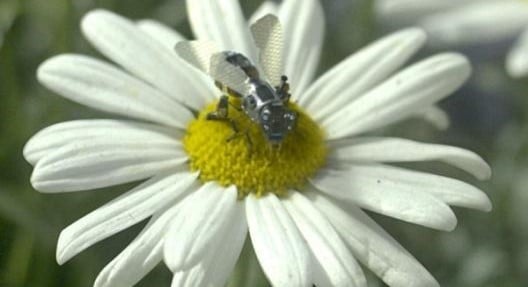
An ‘autonomous drone insect’ in “Hated in the Nation” from Black Mirror created by Netflix (2016).
An autonomous pollinator would ideally be able to mimic the functions of bees, the ability to locate flowers, collect and distribute pollen and do this all without human intervention. Though not as glamorous as seen in Black Mirror, an autonomous pollinator is not as foreign of a concept as one may think.
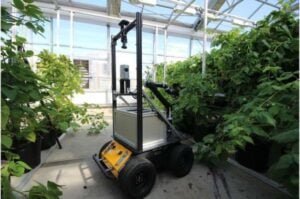
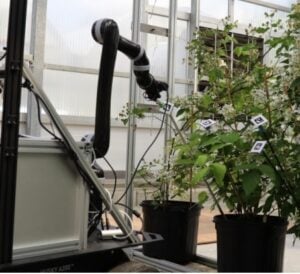
Left: BrambleBee, an autonomous robot developed by West Virginia University in 2018 that is able to pollinate bramble plants in a greenhouse. | Right: BrambleBee’s arm that pollinates plants
Greenhouse
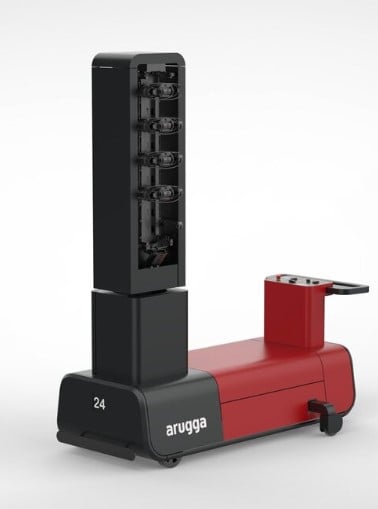
Above: ‘Polly’ an autonomous pollination robot created by Arugga AI Farming that replicates buzz pollination done from Polybee by bumblebees in tomato greenhouses.
Though the bumble bee has been successful in pollinating tomatoes in greenhouses, the conditions of a greenhouse from air ventilation, temperature, humidity and monoculture are not beneficial for bees. Providing the motivation for creating robotic pollinators.
Some of these pollinators are already commercialised, with Australia’s horticultural company Costa Group employing robots created by Arugga to pollinate greenhouses as of 2021, costing $10,000 each. Singaporean company Polybee in combination with Hort Innovation and Perfection Fresh hope to join the market in creating pollination robots.
A report comparing the robot’s efforts to other pollination techniques is expected to be released after September 2023.
Video: An autonomous drone able to pollinate strawberries, tomatoes, capsium and eggplant in greenhouses and vertical farms
With the containment of greenhouses, robots are mostly unaffected by environmental factors such as weather and are able to make their way around with the combination of cameras and artificial intelligence (AI).
How about non greenhouse crops?
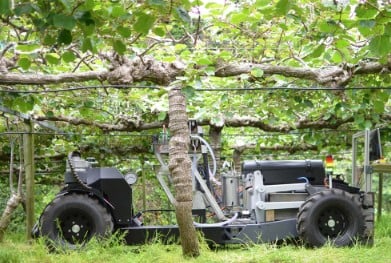
Robotic kiwi pollinator in a kiwifruit canopy created by a team headed by Henry Williams from University of Auckland, 2018.
There has also been investment outside greenhouses, with the kiwifruit having prolific research due to the unsustainability of bee pollination and the high cost of alternative pollination strategies. The development of this technology over time has demonstrated technical success – the robot has been able to produce commercially viable fruit, detect fruits and flowers, move autonomously and shows improvement in its pollination efficiency and accuracy.
Though these robots are still not comparable to alternative pollination strategies in terms of efficiency and cost, there is opportunity for this technology to be improved and replicated in other crops.
Free-flying pollinators
Should we be expecting free-flying robotic bees?
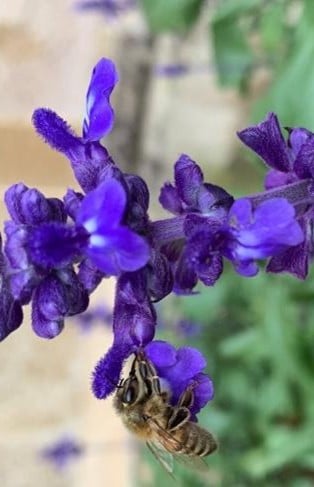

Above Left: Apis mellifera (honey bee) extracting pollen | Right: Movie scene from ‘Black Mirror’ depicting a mass swarm of autonomous drone insects
Definitely not, robotic bees come with their own set of challenges.
The creation of a tiny robot with autonomous flight capabilities is still up in the air due to the limited computing power able to be installed on the device.
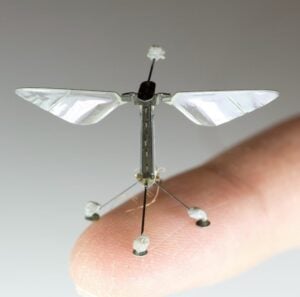
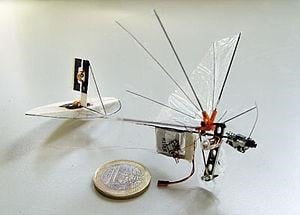
Examples of controlled robots inspired by insect flight. RoboBees was designed to be a specifically crop pollination autonomous microbot.
Left: RoboBees created by Wyss Instititute |Right: DelFly created by Micro Air Vehicle lab of the Delft University of Technology and Wageningen University
Another set of challenges come from them being deployed in the wild, will they compete with existing pollinators and thus put pressure on an already diminishing population and will they cause harm to animals that ingest them?
Further, is the replication of the ‘bee brain’ possible? The honey bee has a complex brain made up of over a million neurons that have been linked to several cognitive abilities. Bees exhibit learned behaviour and memory retention allowing them to remember the surroundings of plants and communicate that information to the rest of their colony. This information is also updated throughout their lifetime, exponentially making them better foragers. The ability to replicate this cognitive learning in a tiny robot has not yet been done, thus making the creation of a perfect bee replica unlikely at this stage.
With decreasing wild pollinator populations, it is beneficial to continue efforts towards improving bee health and biodiversity through encouraging bee-friendly farming and reducing chemical use. However, autonomous pollinators are here to stay and it is likely investment in this field will be continued.
For more readings on this topic: Averting robo-bees: why free-flying robotic bees are a bad idea
Acknowledgements:
- Menzel, R. (2012). “The honeybee as a model for understanding the basis of cognition.” Nature Reviews Neuroscience 13(11): 758-768.
- This article was peer-reviewed by Nadine Chapman and Diana Leemon.

